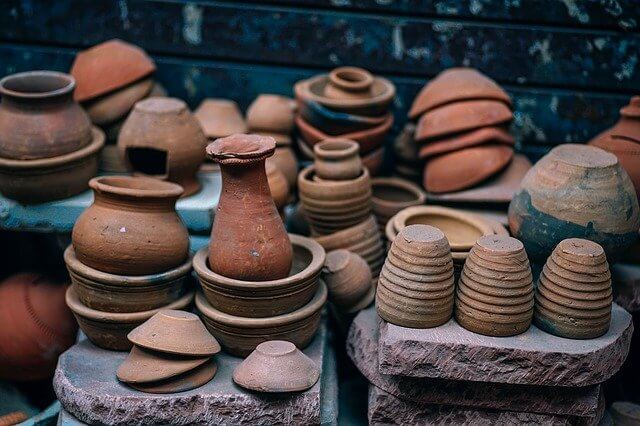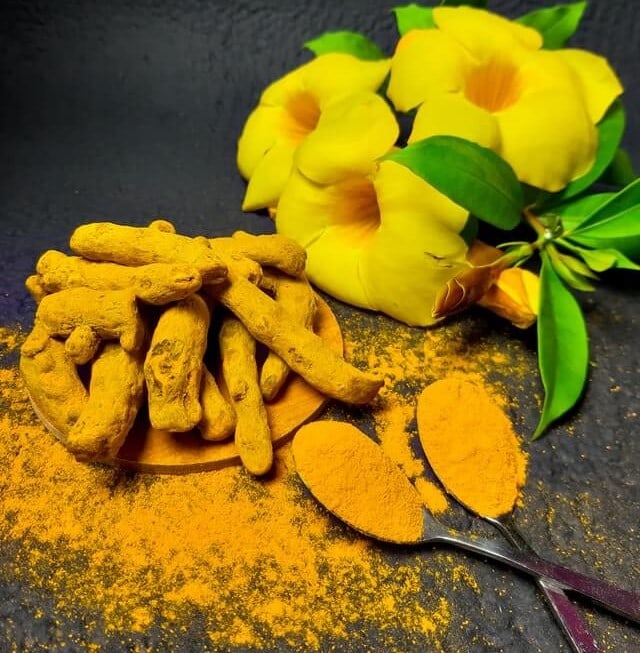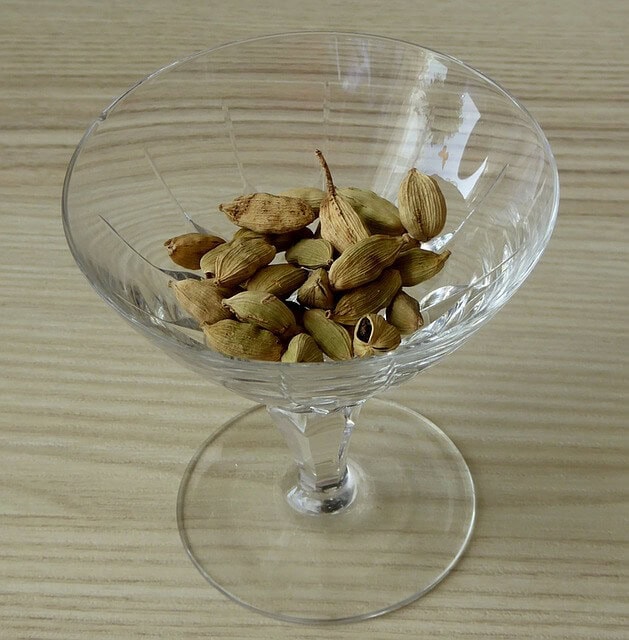
Clay pots are full of benefits which is also highly recommended by Ayurveda. This blog will give you all the information you want on Clay cookware.
Living in a modern world where everything is changing by the second is challenging. We want to keep up with the world and want fast solutions to everyday problem. As human beings, we are also adapting very quickly to the world around us.
But with this fast life, we forget that our daily choices shape our present and future. From our personal life to professional life, whatever steps we take affects us and people around us. We are in a hurry to nowhere while putting a lot on stake: constantly rushing from task to task, skipping meals, ducking deadlines… the list goes on. We are just fast forwarding through the weekdays and catching a breath on weekends. But we need to slow down and think what are we actually losing? Yes, the answer is quite simple: HEALTH!
What’s the point of doing all this, if at the end we are not healthy enough to enjoy the life?
Our health is in our hands. The healthy choices we make day to day is going to be fruitful at the end. We are trying to eat healthy. For instance, we try to buy healthy fruits, vegetables, whole grains, dairy products full of protein, bio products, etc. We buy it consciously to take a step towards healthier life and later cooking it according to our favorite recipe and enjoy it at the end. But are we doing it correctly? Did we cook properly? Did we expose them to too much heat and killed the nutrients? Or did we half cooked them and put pressure on our digestive systems?
Ayurveda on Clay pots
With the advancement of the world, humans are realising the value of the traditional ways of living and the importance of Ayurveda. The utensil we choose to cook also plays an important role. As per Ayurveda, the utensils used for cooking can impact the health of a person. Each type of utensil has their own merits and demerits. Even though today’s utensils are practical, good conductors and goes very well with our fast life, Ayurveda doesn’t recommend them as it believes that it induces too much heat in our food and exposes the nutrients to extreme temperature. Thus, decreasing the nutrition value of our food.
Ayurveda suggests utensils made of copper, bronze, brass and clay. They all have the properties to retain the nutritional value of your food. I personally love the utensils made of clay. They are great for cooking, storing, decorating and are even good the environment. Plus, it also adds that earthy aroma that makes the recipes so tasty. Therefore, this blog is totally dedicated to everything you need to know about clay utensils.
What is Clay?
Clay is a special kind of earth which is made by the decomposition of rocks through the action of weathering. There are three types of clay: Earthenware, stoneware and kaolin (china clay). Earthenware is a common type of clay, containing many minerals, that is used since ancient times. They are porous in nature and requires low temperature for firing. The end product may be rich reds, orange or brown in colour. Stoneware clay is more heavy-duty and requires higher firing temperatures. Kaolin clay, also called white clay, is used to make porcelain.
We will be talking about Earthenware clay in detail here.
Unglazed vs Glazed Clay pot
All of our products are made of refined earthenware clay and are unglazed. In the market, the products made of this type of clay is either unglazed or glazed.
Since earthenware clay are porous in nature, glazing is done to cover these pores and make it waterproof. Glazing makes it also more functional and provide easy cleaning. You can notice glaze when the utensil is smooth and when it shines.
But what is glazing and is it safe?
Every glaze is made of Silica, Alumina and Flux plus additives like colours, bentonite, titanium, zinc etc. Although nowadays glazing components are regulated, many still contains harmful chemicals like lead, mercury and many others that can be hazardous for health. It also can’t be detected just by looking at it. That’s why it is safer to go with unglazed and pure earthen pots.
Why does the clay smells and how to get rid?
The clay used to make these Earthenwares is natural regional clay. These clays carry all the minerals, rocks, and the effects of weather conditions on the clay over vast spans of time.
One region’s clay may smell differently than the other. For example, the Mexican clay pot may have mild smell and the Indian clay pot may have a strong clay smell. The smell of clay comes from the different organic compounds living on it. These compounds are accumulated in the atmosphere and on the surfaces. When it is mixed with water, they offer an aromatic smell, similar to the smell of soil after rain. The compounds also include bacteria called ‘Geosmin’. It is responsible for the earthy smell and taste in the clay. It gives the most pleasant and soothing aroma all the time.
So now you know why your clay pot smells. Though for many this smell is soothing and aromatic, others may be taken aback by this smell. Once you start using it, you will get used to it over time. Also, with frequent use of the clay pots, the smell wears off. But if you still can’t stand the smell, you can season it often. Especially when you have not used the clay pots for a while, you may season it before you use it. The process of seasoning is below.
Benefits of cooking in clay pots
Ayurveda strongly recommends Clay pot Cooking due to its numerous health benefits.
- Clay contains many important nutrients and vitamin like B12, calcium, phosphorous, iron, magnesium and sulfur and it adds them to your food & drinks when you cook or store in them. These nutrients are very beneficial to your body.
- Clay is alkaline in nature. Therefore, it acts as natural detoxify and neutralizes the acidity in your food or water. This helps in digestion.
- Clay is porous in nature. Therefore, it allows both plenty of moisture and heat to circulate through the food. That means you can cook with less oil and fat and still get flavorsome and healthy food. It also retains the nutrition of the food, which is generally lost in other types of utensils.
- Reheating may lead to loss of nutrition but it is not required in clay pots as even after the food is cooked, the clay pot retains the temperature for a longer time.
- Boiling milk, or making curd in Clay pots gives it better taste and texture than metal vessels as clay are porous in nature and absorbs excess water.
- You can store water in clay pots during summers. The water remains cool as clay pots are heat resistant in nature. During winters, you can store food in these clay pots to preserve the warmth of the food.
- Metal pots sometimes releases harmful chemicals as a reaction to heat. These gradually affect your health. However, Earthenware is non-toxic and it prevents poisoning or any related ailments.
- As much as it is beneficial for you and your food, unglazed clay pots are also very environment friendly. Since they basically come from the soil, they can be decomposed right back to it. They are completely bio-degradable, unlike Teflon and steel utensils which needs proper disposal and takes a lot of space.
How to take care of clay pots?
When you buy a clay pot, especially the unglazed ones, it is important to prep it first before using it. This is called seasoning. Soaking the clay pot in water for at least a day will moisturize the pores of inner surface, allowing the food to steam while cooking so the food doesn’t dry out. Seasoning the pot will strengthen the surface and prevent cracking, making it more durable for long time use. There are lots of ways to season the clay pots and also test if the seasoning was successful.
Seasoning:
Source: Kochdichindisch
First time seasoning and then regular seasoning from time to time will keep your pots hygienic and will last longer.
- When you receive a new unglazed clay pot, soak it entirely in normal temperature water.
- Leave it for atleast a day untouched. You will notice that the water oozes and the bubbles are coming out. That’s normal and just shows the clay’s porous nature.
- Take it out of the water and clean it once with fresh water. Then dry it with a towel inside and outside.
- Rub cooking oil (Ghee, coconut oil, sesame oil, olive oil etc.) with hand on the inside and outside of the pot. The warmth of your hands will help absorb the oil in the clay better.
- Set aside and let it air dry completely. Once the oil is absorbed completely, it is ready to use.
To test your seasoning, fill the pot with measured water and leave for some hours. Now check if the water level is the same. If yes, then the seasoning is successful. If no, season it again.
Note: For other clay utensils like glass, bottle, water dispenser etc., soak the utensil in the water for a day and let it air dry later.
Another method of seasoning is by using rice water instead of plain water.
- Wash the clay pot with plain water. Let them dry.
- Boil 3 cups of water in a separate pot.
- Wash rice in running water. Strain the rice and put it in boiling water for 10 min or until the rice is cooked.
- Strain the rice and collect the rice water. Add normal water to it to increase the quantity.
- Fill the clay pots with rice water and keep them for a day.
- Next day, throw the rice water and scrub the pots with a soft sponge and clean it with running water.
- After drying the pots, apply cooking oil with hand on the inside and outside of the pot. The warmth of your hands will help absorb the oil in the clay better.
- Set aside and let it air dry completely. Once the oil is absorbed completely, it is ready to use.
Cleaning:
Clay pot lasts long, only if they are treated with the respect they deserve. With proper seasoning and care on regular basis, it lasts for generations. Since the clay pots are porous in nature, never use soap for cleaning as the soap water gets absorbed by the clay and then gets mixed in your food. You can use baking soda or flour to clean the pot. For scrubbing, use sponge or coconut scrubber. For regular maintenance, boil water in the pot once a week to remove oil and stains. This will also strengthen & hygiene the utensil.

Care:
- Never heat an empty pot.
- Overheating the pot may lead to cracks so it’s better to maintain low medium flame while cooking.
- Please avoid exposing the clay pots to sudden heat, they may crack or break.
- Always keep flame at low. Gradually increase the temperature over time. When the vessel is hot do not pour cold water, let the vessel temperature come to normal then wash.
- These pots are porous, so don’t leave liquid in them for long periods off the heat.
- If using in Oven, no need to preheat the oven. Instead, place the clay pot in a cold oven and allow the temperature to rise slowly.
- In case your mud pot gets burnt in high flame, we suggest to discard the clay pot and go for a new one since the same smell continues with all the future dishes that you will prepare with the same pot.
What to do when you have mold/fungi on the clay pots?
Get rid of it in just 2 days.
Day 1: Take hot water (3/4th portion of clay pot size initially to avoid overflowing) in a big vessel and add 1 tsp of baking soda for every 1 litre of water. Put the clay pot in the hot water so that the water doesn’t fill the insides of the pot. Now add hot water to the inside of the pot. Once you add the hot water, the pot will sink and fill the 1/4th outer portion of the pot. Again add 1 tsp of baking soda in the pot and another 2 tsp on the outside of the pot. Leave for 3 hours.
Now take the pot out of the water and discard the water. Make a paste of baking soda and water in equal proportion. Apply the paste on all sides (inside and out). Leave it for half and hour. Make sure the base doesn’t touch the floor. So, put it on a stand for elevation. After 30 minutes, wash it with plain water thoroughly and dry it under sun.
Day 2: Once dried, you can see the mold gone but baking soda will be present in the pores of the pot. Simply boil water in it again the next day. You will see baking soda coming out of the pores in water. Wash immediately after boiling with fresh water. Dry it if you are not using it.
Storing Clay Pots
After washing, make sure the pot is thoroughly dry before storing it. Store the clay pot with the lid off, allowing air to circulate. Or invert the lid and place a paper towel between the pot and the lid to prevent chipping. Store your earthenware in dry and well-ventilated areas. This eliminates the risk of mold growth inside the pot.



















